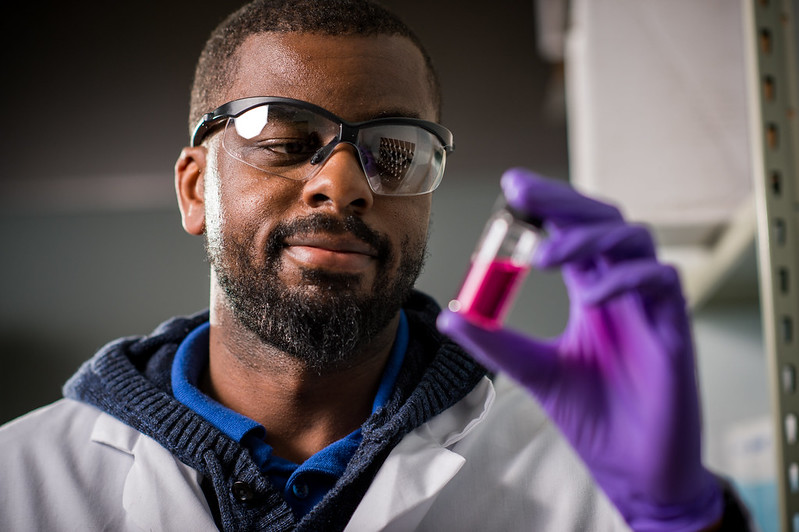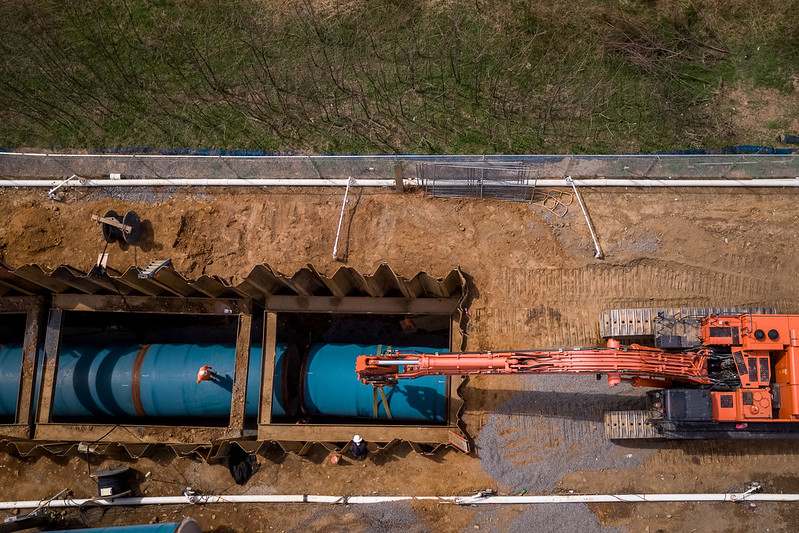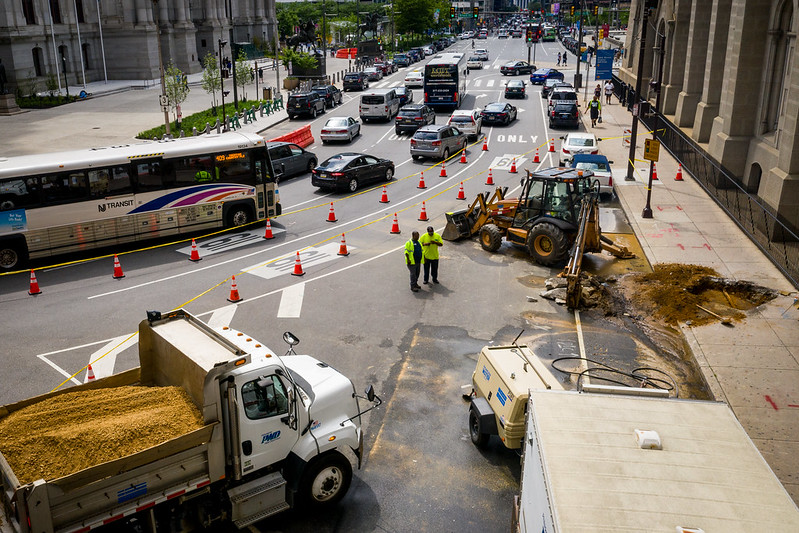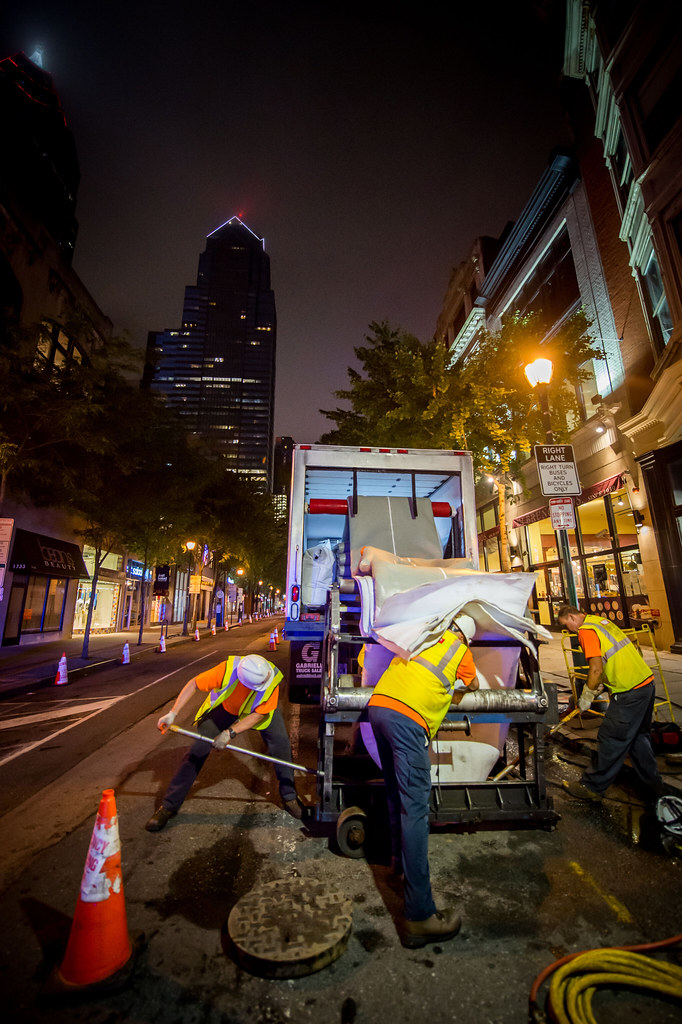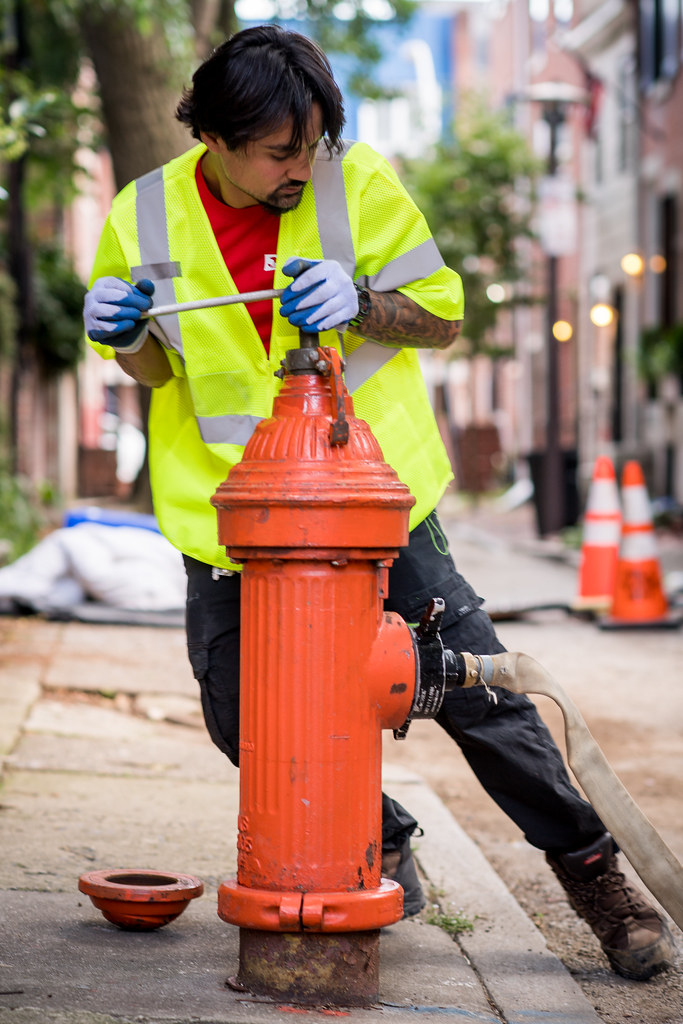Hi there! My name is Herbie Hickmott, and I work as a Senior Graphic Designer for PWD.
When I introduce myself and my job, I sometimes get a puzzled look—what does the Philadelphia Water Department need a graphic designer for?
I typically try to highlight some of the work our customers and the public may already know: branding experiences people engage with at events like our traveling Philly Water Bar, the in-depth guides we offer to highlight PWD’s efforts to protect waterways and deliver quality drinking water, and graphics supporting campaigns to boost awareness about new assistance programs.
My teammates and I rely heavily on visual storytelling. That often means showing a complicated process through a diagram or other visual to expand on written descriptions or instructions.
Photography is incredibly important to us and having great images that capture the work that we do and the people who do it is an ever-present need.
During the first half of 2019, we worked with professional photographers to capture the truly impressive and varied work that’s being done around the clock by some of the 2,000-plus folks who work for PWD.
Below, I highlighted five of my favorite photos from those shoots, and included a few more so you can get a feel for what the photographers captured. Take a look and browse the slideshows:
#1: Lens on The Labs
This shoot was one of the first we did, back in March. It involved spending a few hours with the great people at the Bureau of Laboratory Services in Northeast Philadelphia. Here, Dante, an Environmental Scientist, is testing a sample for chlorine levels. I like that this image captures a moment during the test, and focuses on Dante’s face—showing just one of the many people responsible for ensuring our drinking water is top quality.
#2: The Bird's-Eye View
What I love about this photo (and photoshoot) is the magnitude and scale it captures.
We utilized a drone for this shoot, and it paid off. This photo was taken at one of our three drinking water treatment plants and highlights the large-scale infrastructure PWD is constantly investing in: big projects that are pieces of even larger, detailed strategic plans like our Drinking Water Master Plan.
Our Planning and Research Unit looks many decades into the future to ensure Philadelphia has safe water now and when our grandchildren will need it.
Photo shoots like this capture a moment in time when parts of those plans are being executed, and it is something we’ve been doing since cameras could be first be used to document infrastructure-in-the-making.
When the project in the above photo is complete, the large blue pipes will be covered over. While they likely won’t be seen again for decades, they will most certainly play an important part in the delivery and storage of the drinking water our city depends on.
More: Read this public summary of our 25-year Drinking Water Master Plan.
#3: Just Another Afternoon in Center City
In early June 2019, we were on the scene across from City Hall as PWD crews investigated the source of a leak. Steps from both City Hall and the Masonic Temple, hulking machines dotted the roadway and sidewalk.
You can't get a much more high-profile job site than an emergency repair taking place in the heart of our busy city.
The crew worked quickly, and by late afternoon, the sidewalk was reopened for pedestrians and cars were zipping around City Hall once again.
Fun fact: On this spot once stood some of our very first water infrastructure: the Centre Square Water Works, built in 1801. Schuylkill River water was sent to homes through wood pipes, like the one found under Spruce Street in 2016, and cost residents about $5 a year, making Philly one of the first cities to make clean drinking water a municipal responsibility.
#4: Working 24/7
I witnessed an entirely different side of the work that PWD does as I stood on the sidewalk in Center City and watched workers begin a sewer relining project.
A fairly recent innovation, sewer lining prevents leaking in older sewers, extending their life and avoiding the costs and disruption of tearing up streets. Because many residents haven’t heard of the process and don’t know what to expect, we wanted to document the work with photos.
I met up with the crew around 9 p.m. on a quiet June night, unsure of what to expect. After some work to prepare the manhole and sewer, they unfurled a massive liner—think of something like one of those collapsible nylon play tunnels, only much tougher and about as long as a city block—and fed it into the street opening.
Even though I left after 1 a.m., the job took 24 hours of around-the-clock work from this dedicated crew, ensuring the people who use this busy Center City block could return to their daily routines as soon as possible. The resulting images highlight this entire process and capture the vivid colors and visual textures of our city at night.
More: You can see many of our ongoing infrastructure maintenance work sites on this map.
#5: The Investigators
This is from a shoot capturing what the industry calls a dye test. When we get a report about a leak in the street, a depression, or hole in the pavement, dye tests can help us determine the cause.
By following dyed water, we can often tell if the problem is coming from an issue with a City sewer, a homeowner’s pipes, or something else. The five workers in this crew were incredibly knowledgeable and efficient in doing the test, and went above-and-beyond to walk us through various situations and explain this process from start to finish.
I love that this image captures the physicality involved in much of our work.
Reminder: hydrants should only be opened by PWD or the Philadelphia Fire Dept. because they can break if opened the wrong way and the extreme water pressure can cause injuries. Learn more ›

